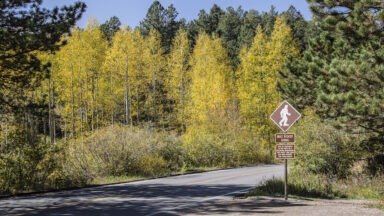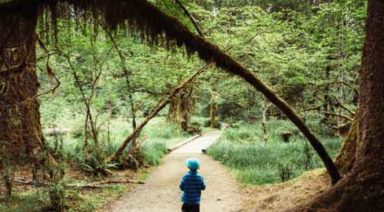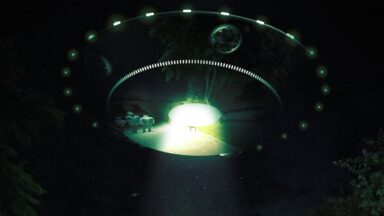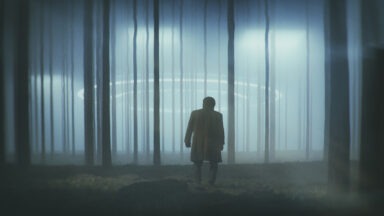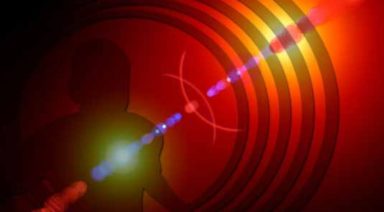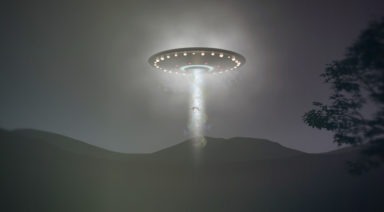Bigfoot Encounters and Other Evidence of the Elusive Cryptid

Whether you consider yourself a believer or not, there are hundreds, if not thousands, of reported Bigfoot encounters, including a few from some widely recognized names. These encounters span cultures and continents and even date back to times of antiquity when natives ruled the land. Today, more than 20 percent of the U.S. population says it believes Bigfoot exists, and there’s plenty of evidence to boot.
Last year, two sightings picked up by trail cameras on Sherman Pass and SR 20 in Snoqualmie, WA caught what appears to be a large bipedal figure trekking through the snow, reigniting passionate debate about the famous cryptid.
Bigfoot Sightings
During a sighting in Whitehall, NY – a town so notorious for Bigfoot encounters it made the creature its official mascot – a man claimed to have witnessed a hirsute hominid cross the road and step over a guardrail in front of his car while driving on Route 4. He described the creature as standing about 6-feet tall, with black hair all over its body, walking upright on two feet like an ape.
But the witness in this story, like many others, told the local newspaper he wished to remain anonymous, due to fear of ridicule. This type of shaming and taboo with cryptids, such as Bigfoot, is typical and has stood as one of the bigger hurdles for those trying to uncover a modicum of truth about such an elusive creature.
Nonetheless, there are still those who continue to devote their time to tracking the creature and studying its behavior, despite the derision.
Aside from the myriad personalities on the many Bigfoot-hunting reality TV shows, one of the more recognized names in the South is a man hunting Bigfoot’s cousin the Skunk Ape, named Dave Shealy. Shealy’s first Skunk Ape encounter occurred when he was just a teenager and ever since he’s made it his life’s work finding indisputable evidence of the creature’s existence. In an interview with Smithsonian Magazine he details his experiences that are also detailed on the Discovery Channel show Finding Bigfoot.
Shealy is responsible for one of the more widely-viewed videos purporting to show the Skunk Ape. In the video one sees a bipedal creature crossing a swamp through a patch of palm trees and knee-deep water, eventually running at an estimated speed of 22 miles per hour.

Another time he set up an elevated lookout platform to watch for the creature, dozing off after spending hours in wait. He awoke to the splash of the creature trekking through the swamp, allowing him enough time to snap some pictures.
While skeptics say his photos and video are a hoax, Shealy’s sightings have been supported by others, with a number of Floridians claiming to have seen an orange-haired, biped roaming the Everglade swamps over the past decades. One of the more famous pieces of evidence corroborating Shealy is the famous Myakka photographs, submitted to the Sarasota County Sheriff’s office under anonymity.
The photos appear to show an orangutan-like creature peering form behind some bushes in the photographer’s backyard. When compared to photos of an actual orangutan, the resemblances appear uncanny.
Bigfoot Encounters
Rob Lowe jumped on the Bigfoot reality show bandwagon with his show “The Lowe Files,” which followed him and his two sons on “In Search Of…”-inspired treks through the wilderness in an attempt to capture footage of cryptids, ghosts, and the paranormal. But Lowe isn’t the only notable name to express his belief in cryptids or share a story of a Bigfoot encounter. In fact, the 25th president of the United States Teddy Roosevelt, even has his own written account with a fellow outdoorsmen who came across the creature near the turn of the century – a man he referred to as Bauman.

In 1892, Roosevelt wrote of Bauman’s encounter, saying that after a hunting excursion the men returned to camp finding they had a visitor during their absence. Amid the strewn gear and supplies they noticed the footprints of a creature resembling nothing of a bear or cougar. Instead the footprints resembled those left by a biped.
Later that night, they were awoken to the sound of the creature returning to their camp, unable to make out anything but it’s shadow.
“At midnight Bauman was awakened by some noise and sat up in his blankets. As he did so his nostrils were struck by a strong, wild-beast odor, and he caught the loom of a great body in the darkness…” Roosevelt said.
Another commonality among Bigfoot encounters is the creature’s noticeable cry or scream. Their distinctive sound is often what alerts one to their presence. The call of Bigfoot can be a howling or shrieking sound that eerily echoes through the woods. It will often set off dogs if any are in the area, who begin barking wildly at the peculiar sound.
According to John Keel’s book Strange Creatures from Time and Space this howl transcends Bigfoot’s many forms across disparate cultures. In one instance, Professor V.K. Leontiev was camping near a river in the former Soviet Union, when a Yeti-type creature made its presence known.
“It wasn’t like the yell of an animal – not any wild animal or bird known to me could make such a sound, and yet it couldn’t be a human being either,” he said.
Then he saw it.
“He was walking on his feet, not touching the ground with his hands. His shoulders were unusually wide. His body was covered with long, dark hair. He was about 7-feet tall.”
He fired a shot in the air and the creature took off at incredible speed – another commonly reported characteristic that adds to the creature’s elusive nature.
Les Stroud, better known by his nickname and TV show title “Survivorman,” has gone on the record to discuss two instances in which he believes he had encounters with a bipedal cryptid while out in the wilderness. On one occasion he was filmed alone in the woods somewhere in North America, building shelter or some tool for survival, in which he can be seen craning his neck after hearing a rustling in the bushes. He continues to survey the area, keeping his eyes and ears alert in the case there is a grizzly bear nearby. Suddenly, he hears the sound a gorilla would make, a guttural “oooh, oooh, oooh,” repeated five times.
In another instance, he was in the bush in Australia living like early aboriginals, hunkered down in a shelter for the evening. Suddenly he heard the sound of a biped walking toward his shelter from behind.
Stroud says he can tell the difference between a bear or other large animal whose steps could align to sound similar, but that he knew this was a bipedal creature — like a large man — walking toward him.
Frightened, he reacted as he would to a bear, shouting “Hey, we’re over here!” Upon which, the creature stopped dead in its tracks, turned around, and walked back in the direction it came at a slightly faster pace.
Stroud, who has spent more time in the wilderness than most people on Earth, says there are two ways to pose the question about the possible existence of Bigfoot or a similar cryptid. One way, “Hey, do you believe in Bigfoot?” is a sure-fire way to receive laughs or incredulity.
Or, you could ask…
“Do you think it’s possible, in our vast expanses of forest throughout the planet, that in tiny pockets maybe a bipedal ape that’s intuitive, sensitive to human beings, and doesn’t want to be discovered, could be responsible for hundreds of physical and audible anecdotes?”
The latter question invites logic and reasoning and is the reason so many cryptozoologists have dedicated their time to seeking truth about cryptids such as Bigfoot. And it is only through questions like these that any progress can be made to find definitive evidence of a creature that has done so well to elude us for so long.
For more information about Bigfoot encounters and sightings of other cryptids watch this episode of Beyond Belief with investigative journalist Seth Breedlove:
Oklahoma Lawmaker Proposes Official Bigfoot Hunting Season

A hunting season for Bigfoot? One Oklahoma lawmaker has proposed just that.
Oklahoma state representative Justin Humphrey has filed legislation that would establish a Bigfoot hunting season in the state. The bill would work with the Oklahoma wildlife conservation division to establish the dates of the season, licensing, and fees. Humphrey is also hoping to establish a $25,000 bounty for anyone who captures the creature, adding he doesn’t want anyone to kill Bigfoot, but rather the license would specify trapping only.
Humphrey said in his statement “Establishing an actual hunting season and issuing licenses for people who want to hunt Bigfoot will just draw more people to our already beautiful part of the state. It will be a great way for people to enjoy our area and to have some fun.”


